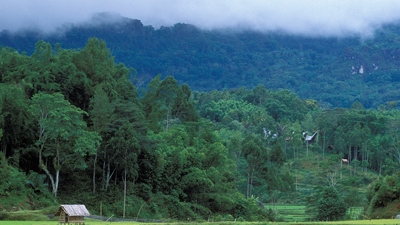As outlined in the concept note, which was endorsed by the Committee on Development Effectiveness (a standing committee of the World Bank Group’s Board of Directors), the Action Plan is to describe how the portfolio is expected to evolve over the next several years, in a manner which is broader based than in the past. The ambition in the Action Plan must, at the same time, be tempered with a strong sense of realism about what the World Bank Group can achieve in working with its clients, given the modest size of the forests portfolio, which accounts for much less than 1 percent of IDA and IBRD financing.
Because the framework outlined in the World Bank Group’s 2002 Strategy, Sustaining Forests, has remained highly relevant for underpinning its forests investments and still forms a solid basis for our work in this sector, the World Bank Group is not preparing a new strategy on forests. The Action Plan will describe how the World Bank Group will continue to support implementation of the 2002 Strategy through its planned pipeline of operations.
World Bank Group Action Plans are largely informed by the structure and content of the existing proposed project pipeline/lending program. For the Bank, this is highly dependent on the Country Assistance Strategy (CAS) and Country Partnership Strategy (CPS) process, which relies heavily on structured consultation processes at the national level. As part of the Action Plan, we will document the consultations which have gone into preparation of CASs and CPSs, which are proposing Bank forests sector support.
The Action Plan will look beyond the forest, to consider the potential of forests and trees in the rural landscape to generate "climate-smart" solutions by incorporating trees, forests and woodlands into farming systems – for example, through agroforestry schemes which can build resilience to climate change, create soil and above-ground carbon stocks, and improve food security, and through forest landscape restoration efforts to bring degraded landscapes back into production. This “landscape” approach embraces activities such as protecting forests and other critical natural habitats, restoring degraded forest land, boosting agricultural productivity, realigning farm and forest incentives to protect forests from being converted into farmland, introducing trees on farms and ranches, and involving local communities more directly in the design and oversight of forest management.
Feedback
In addition to drawing on the consultations conducted through the CAS and CPS process, the Bank solicited broader stakeholder feedback on the scope and content of the proposed action plan and, later this fall, will be seeking comment on the draft of the document.
The World Bank Group’s Forests Team (part of the Sustainable Development Network) is also giving consideration to developing a successor mechanism to the External Advisory Group, which was created as an outcome of the 2002 Strategy as a platform for CSOs to provide feedback on the Bank's forests program. The creation of a broader platform for information exchange and consultation could helpfully inform the WBG's work on forests. Given the proliferation of other consultation mechanisms such as those supported by the Forest Carbon Partnership Facility, the Forest Investment Program, and other specialized programs, the added value of an additional consultation mechanism would have to be clearly articulated. We would welcome views on this as part of the public comment process.
